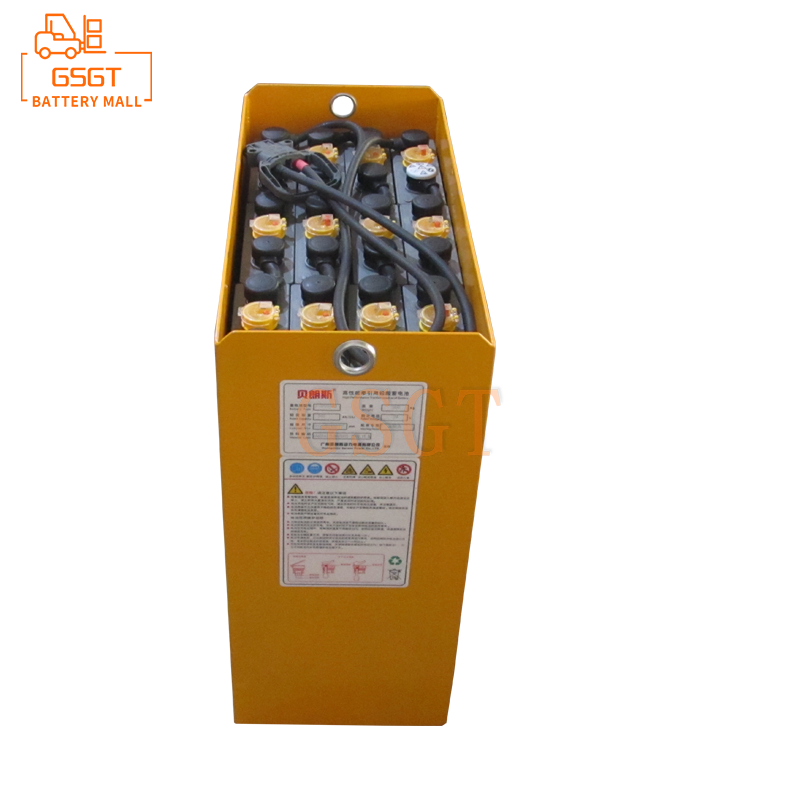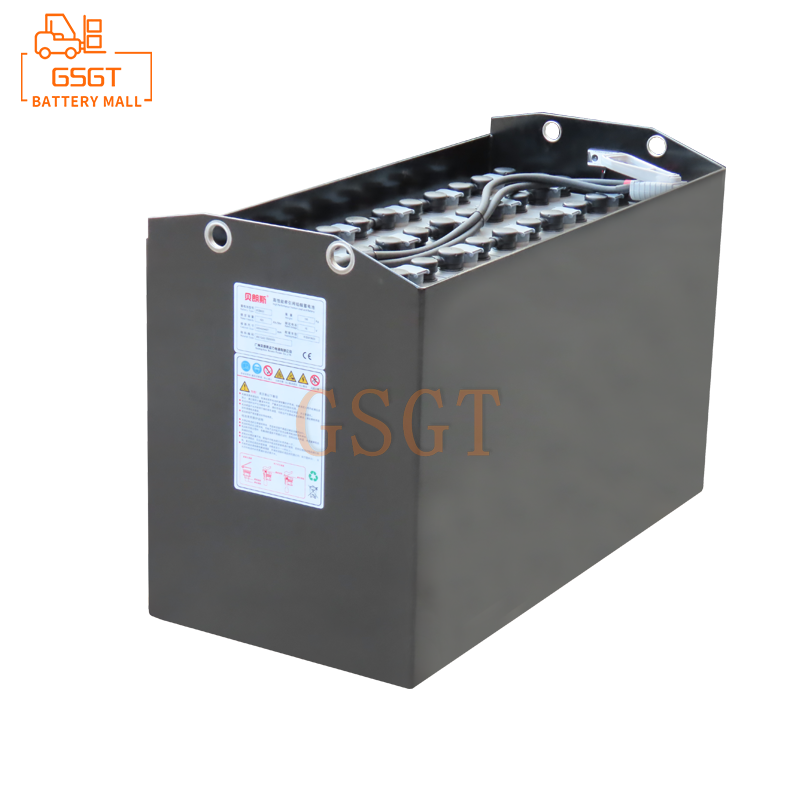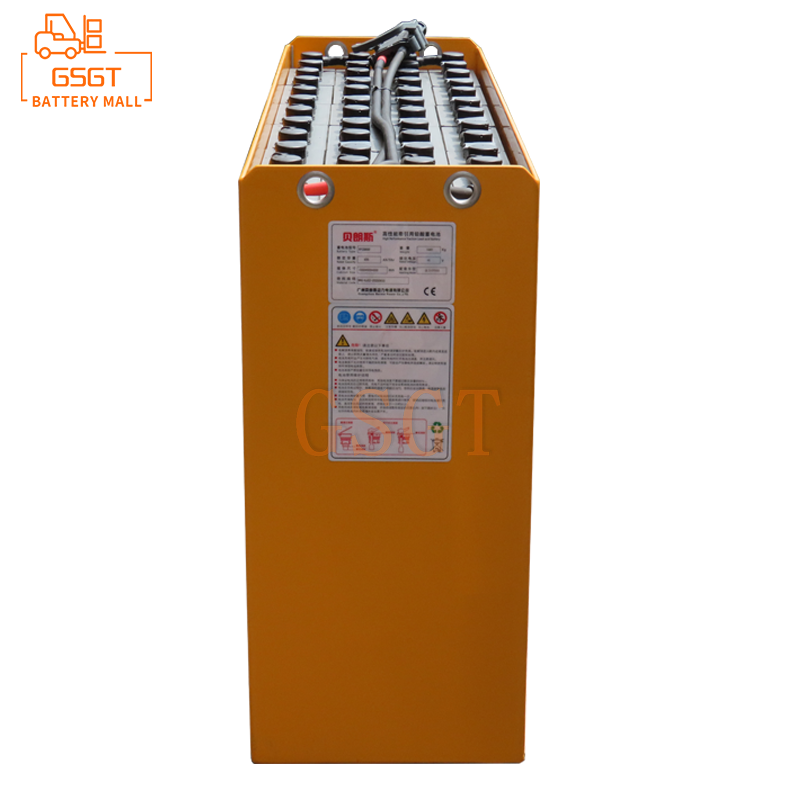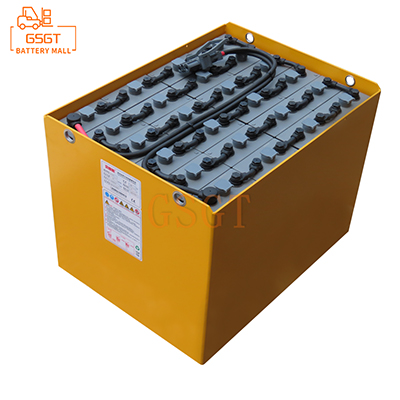Time:2025-04-21 09:43:30
Browse:629
Abstract
This article elaborates in detail on the concept and hazards of deep discharge of lead-acid batteries in forklifts, deeply analyzes the causes of deep discharge, and comprehensively discusses the recovery and treatment methods after deep discharge of lead-acid batteries in forklifts. The aim is to provide practical references for forklift users and relevant maintenance personnel, effectively extend the service life of lead-acid batteries, and ensure the normal operation of forklifts.
1. Introduction
Lead-acid batteries have been widely used in the forklift field due to their advantages such as mature technology, low cost and good high-current discharge performance. However, during the daily use of forklifts, deep discharge of lead-acid batteries occurs from time to time. Deep discharge not only reduces the capacity and performance of the battery, but also seriously shortens its service life, increases the usage cost and equipment downtime, bringing many adverse effects to the production of enterprises. Therefore, it is of great practical significance to have an in-depth understanding of the recovery treatment methods for forklift lead-acid batteries after deep discharge.
2. The Concept and Hazards of Deep Discharge in Lead-Acid Batteries
(1) The concept of deep discharge
Deep discharge of lead-acid batteries usually refers to the discharge degree of the battery exceeding 80% of its rated capacity during use. Generally speaking, when the terminal voltage of a battery drops to a certain extent, it can be regarded as a deep discharge state. During the operation of forklifts, due to heavy workloads, long working hours or improper charging management, it is easy for lead-acid batteries to over-discharge and enter a deep discharge state.
(2) Hazards of Deep Discharge
1. ** Plate sulfation ** : After deep discharge, a large amount of lead sulfate crystallizes on the battery plates. These large lead sulfate crystals have poor electrical conductivity, which will hinder the normal electrochemical reactions on the plates, reduce the active substances on the plates, and lead to a decrease in the capacity of the battery. Long-term sulfation of the plates will cause the surface of the plates to harden and the active substances to fall off. In severe cases, it may even lead to the scrapping of the plates.
2. ** Shortened service life ** : Frequent deep discharges will accelerate the chemical and physical changes inside the battery, intensifying the aging and damage of components such as plates and separators. Studies show that compared with batteries that are charged and discharged normally, lead-acid batteries that are frequently deeply discharged may have their service life shortened by 30% to 50%.
3. ** Performance degradation ** : After deep discharge, the charging and discharging efficiency of the battery decreases and its internal resistance increases. During the charging process, it takes a longer time to fully charge, and when discharging, the output voltage is unstable, making it difficult to provide sufficient power and affecting the normal operation efficiency and working performance of the forklift.
3. Analysis of the Causes of Deep Discharge of Lead-Acid Batteries in Forklifts
(1) Usage Factors
1. ** Excessive working hours ** : Forklifts may need to work continuously for long hours in some high-intensity logistics operation scenarios, such as handling goods in large warehouses and loading and unloading at ports. If the charging time is not reasonably arranged and the battery continues to work after its power is exhausted, it is easy to cause deep discharge.
2. ** Overloading operation ** : When forklifts are overloaded or frequently run on slopes, the load on the engine and battery will increase. To meet the additional power demand, the battery will accelerate the discharge rate, consuming a large amount of electricity in a short period of time, thereby triggering deep discharge.
3. ** Improper operation by operators ** : Some forklift operators lack a correct understanding of the use and maintenance of batteries. When the battery power is insufficient, they do not stop the operation in time to charge it but continue to use the forklift until the battery power is exhausted. In addition, unreasonable driving operations such as frequent sudden acceleration and braking will also increase the discharge current of the battery and accelerate the consumption of power.
(2) Charging Management Factors
1. ** Untimely charging ** : A reasonable charging plan was not formulated in accordance with the battery's usage instructions and actual usage conditions, resulting in the battery not being charged in time when the power is low.
2. ** Charging equipment failure ** : If the charging equipment malfunctions, such as unstable output voltage of the charger or abnormal charging current, it will affect the normal charging process of the battery. If the faults of the charging equipment cannot be detected and repaired in time, the battery may not be fully charged and is more likely to experience deep discharge in subsequent use.
3. Incorrect charging method: Using an unmatched charger or adopting an incorrect charging mode, such as overcharging or overdischarging for a long time, can cause damage to the battery. Overcharging will cause the battery to heat up and accelerate the aging of the plates. Over-discharge, on the other hand, directly leads to deep discharge, affecting the performance and lifespan of the battery.
(3) Factors related to the battery itself
1. ** Aging ** : As the usage time increases, the internal components of lead-acid batteries, such as plates and separators, will gradually age, the active substances will decrease, and the performance of the electrolyte will decline. Aged batteries will have a reduced capacity for storing electricity and discharging, and are more prone to deep discharge.
2. ** Quality Issues ** : Some low-quality lead-acid batteries have defects in the material of their plates and manufacturing processes, which leads to unstable capacity and performance of the batteries. During use, these batteries may not be able to meet the power demand for the normal operation of the forklift and are prone to deep discharge.
4. Recovery Treatment Methods for Forklift Lead-acid Batteries after Deep Discharge
(1) Preliminary Inspection and Assessment
1. ** Visual Inspection ** : Conduct an visual inspection on the deeply discharged battery to check if the casing has any damage, deformation, leakage, etc. If the casing is damaged, it may cause the electrolyte to leak, which not only pollutes the environment but also affects the normal use of the battery. It is necessary to replace the casing in time or scrap the battery.
2. ** Voltage Measurement ** : Use a multimeter to measure the terminal voltage of the battery to determine its remaining charge. Record the voltage value of each individual battery cell to determine whether there is a voltage imbalance in the battery. If the voltage difference of a single cell is significant, there may be an internal short circuit or other faults, and further inspection is required.
3. ** Electrolyte Inspection ** : Check whether the electrolyte level is within the specified scale range. If the liquid level is too low, distilled water or special lead-acid battery replenishment liquid should be added to the appropriate position. At the same time, observe the color and transparency of the electrolyte. If the electrolyte is turbid or has an abnormal color, it may indicate that there are serious problems inside the battery, and further diagnosis and treatment are required.
(2) Conventional Methods for Resuming charging
1. ** Use low current constant voltage charging ** : For deeply discharged batteries, first use a low current (generally 1/10-1/20 of the battery capacity) for constant voltage charging. This can prevent high current charging from causing further damage to the plates, and at the same time help gradually activate the active substances on the plates. During the charging process, closely observe the voltage and temperature changes of the battery. When the voltage rises to a certain level and remains stable, and the temperature does not exceed 45℃, continue charging for 2 to 3 hours to ensure that the chemical reactions inside the battery proceed fully.
2. ** Staged charging ** : After charging at a low current and constant voltage for a period of time, gradually increase the charging current and enter staged charging. Adjust the charging current to 1/5 to 1/8 of the battery capacity and continue charging. When the battery voltage reaches a certain value, and the charging current drops to a certain value (such as 0.1C - 0.2C, where C is the battery capacity) and remains stable, while a large number of bubbles appear in the electrolyte, it indicates that the battery is basically fully charged. At this point, you can stop charging and let the battery stand for 1 to 2 hours to ensure that the internal electrolyte is fully mixed and stabilized.
(3) Restorative Treatment methods
1. ** Pulse Repair method ** : By using pulse repair equipment, high-frequency pulse current is output to deeply discharged batteries. Pulsed current can break the lead sulfate crystals on the plates, causing them to redissolve and restore the active substances on the plates. During the pulse repair process, parameters such as the frequency, width and amplitude of the pulse need to be adjusted according to the specific conditions of the battery. Generally speaking, after several hours to tens of hours of pulse repair, combined with conventional charging, the capacity and performance of the battery can be effectively improved.
2. ** Chemical Repair method ** : For storage batteries with severe sulfation of the plates, the chemical repair method can be adopted. Add an appropriate amount of special repair solution to the battery. The chemical components in the repair solution can undergo a chemical reaction with lead sulfate crystals, converting them into soluble substances, thereby eliminating the sulfation of the plates. When adding the repair solution, strictly follow the instructions for use to avoid adding too much or too little. After adding the repair solution, carry out regular charging and discharging cycles to further restore the performance of the battery.
(4) Maintenance and Care Measures
1. ** Regular charging ** : Establish a reasonable charging system to ensure that the lead-acid batteries of forklifts are charged in a timely manner after each use, avoiding excessive discharge. It is generally recommended to charge the battery when its power remains at 20% to 30%, rather than waiting until it is completely drained. At the same time, operate in accordance with the charging time and charging method specified in the battery's user manual to avoid overcharging or overdischarging.
2. ** Equalization Charging ** : Regularly perform equalization charging on the battery, usually 1-2 times a month. Equalization charging can make the voltage and capacity of each cell in the battery tend to be consistent, prevent the occurrence of voltage imbalance, and extend the service life of the battery. When performing equalization charging, appropriately increase the charging voltage and extend the charging time by 1 to 2 hours.
3. ** Electrolyte Maintenance ** : Regularly check the electrolyte level and density. When the liquid level is insufficient, add distilled water or special supplementary liquid in time. Do not add ordinary tap water to prevent impurities in the water from damaging the battery. Measure the density of the electrolyte at regular intervals (such as every quarter), and determine whether the concentration of the electrolyte is normal based on the measurement results. If the density is abnormal, it can be adjusted by adding distilled water or a special electrolyte regulator.
4. ** Cleaning and Inspection ** : Keep the surface of the battery clean. Regularly wipe the casing with a damp cloth to prevent dust, impurities, etc. from entering the battery and affecting its performance. At the same time, check whether the connection wires of the battery are firm and whether there is any loosening, oxidation or other conditions. If oxidation of the connecting wires is found, they can be sanded with sandpaper or treated with a dedicated cleaner to ensure good connection, reduce resistance and improve charging and discharging efficiency.
5. Conclusion
Deep discharge of lead-acid batteries in forklifts is a common problem during the operation of forklifts, which can have a significant impact on the performance and lifespan of the batteries. By thoroughly understanding the concept, hazards and causes of deep discharge, and mastering scientific and reasonable recovery and treatment methods, such as initial inspection and assessment, regular recovery charging, restorative treatment, as well as strengthened maintenance and care measures, the performance of the battery after deep discharge can be effectively restored, its service life can be prolonged, the usage cost can be reduced, and the normal operation of forklifts can be ensured. In practical work, forklift users and maintenance personnel should attach great importance to the use and management of lead-acid batteries, follow the correct operation norms and maintenance methods, prevent the occurrence of deep discharge, and ensure the efficient and stable operation of forklifts. At the same time, with the continuous development of technology, attention should also be paid to the application of new lead-acid battery repair technologies and products to further improve the maintenance and repair level of batteries.

$1105

$2450

$3810

$3405

MESSAGE
Professional And Efficient
Security
Affordable Price
Professional Services